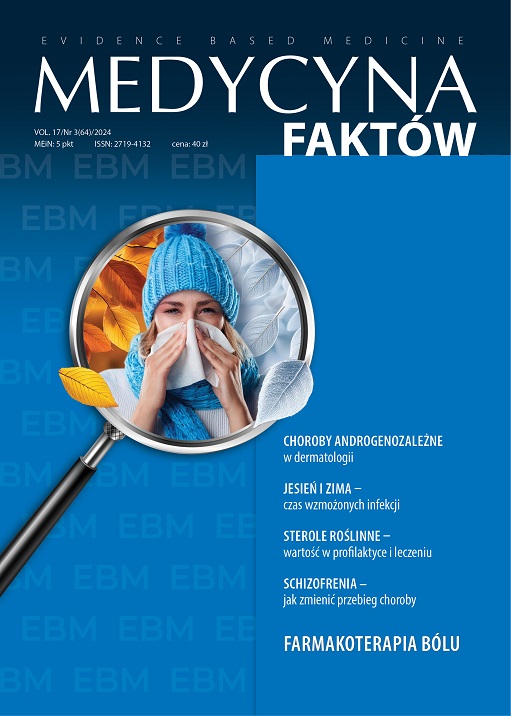Vertigo in practice Review article
Main Article Content
Abstract
Vertigo is defined as the illusion of a rotating movement of the surroundings, one’s own body, head, a feeling of unstable ground or uncertain posture. The hallucination of rotational movement is characteristic of vertigo and is mainly associated with peripheral disorders.
In the diagnostic process, including general medical, laryngological and neurological examinations, it is important to know the profile of a patient with vertigo of vestibular origin of various etiologies (benign paroxysmal positional vertigo, acute unilateral vestibulopathy, Ménière’s disease). This allows to asking the patient the right questions during the subjective examination, as well as to correctly interpret the HINTS test and positional tests. An additional important element of vertigo diagnostics is the physiotherapeutic assessment of gait and posture disorders. Standardization of diagnostic procedures and treatment in the field of neuro-otology aims to improve care for patients with vertigo.
Article Details
Copyright © by Medical Education. All rights reserved.
References
2. von Brevern M, Bertholon P, Brandt T et al. Benign paroxysmal positional vertigo: Diagnostic criteria. J Vestib Res. 2015; 25(3-4): 105-17.
3. Strupp M, Brandt T. Diagnosis and treatment of vertigo and dizziness. Dtsch Arztebl Int. 2008; 105(10): 173-80.
4. Agrawal Y, Van de Berg R, Wuyts F et al. Presbyvestibulopathy: Diagnostic criteria Consensus document of the classification committee of the Bárány Society. J Vestib Res. 2019; 29(4): 161-70.
5. Karatas M. Vascular Vertigo Epidemiology and Clinical Syndromes. The Neurologist. 2011; 17(1): 1-10.
6. Strupp M, Bisdorff A, Furman J et al. Acute unilateral vestibulopathy/vestibular neuritis: Diagnostic criteria. J Vestib Res. 2022; 32(5): 389-406.
7. Cohen HS, Gottshall KR, Graziano M et al. International guidelines for education in vestibular rehabilitation therapy. J Vestib Res. 2011; 21(5): 243-50.
8. Mielańczuk-Lubecka B, Stolarski J. Fizjoterapia w chorobach napadowych układu nerwowego. In: Domitrz I, Cegielska J, Stolarski J (ed.). Neurologia: podręcznik dla studentów fizjoterapii. Tom 2. Wydawnictwo Lekarskie PZWL, Warszawa 2023: 510-20.
9. Mielańczuk-Lubecka B, Bojanowski S, Krzysztoń K et al. Zawroty głowy w praktyce neurologa i fizjoterapeuty – interdyscyplinarne spojrzenie na diagnostykę i leczenie. Praktyczna Fizjoterapia i Rehabilitacja. 2024; 153: 1-13.
10. Zamysłowska-Szmytke E, Durmała J. Zawroty głowy – podstawy diagnostyki i rehabilitacji. Atlas ćwiczeń. MedPharm Polska, Wrocław 2020.

